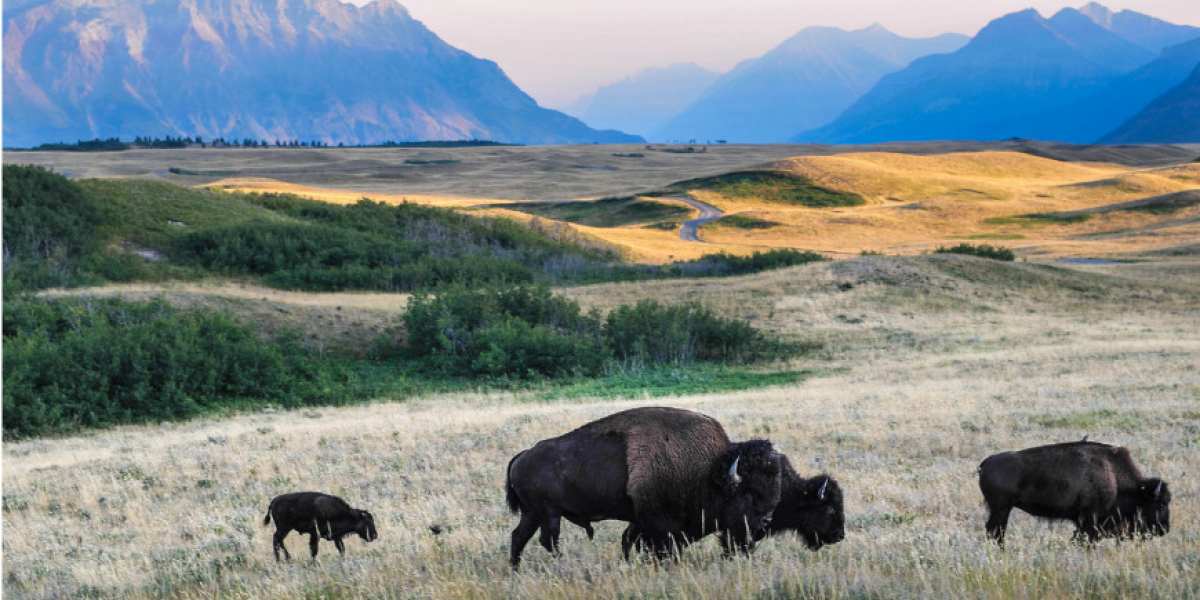
May 22, 2024
By Talha Awan
Today is International Day for Biological Diversity, an opportunity to recognize and celebrate the incredible variety of life that sustains our planet. Amidst Canada’s vast landscapes lies a treasure trove of biodiversity: the grasslands. These often-overlooked ecosystems play a vital role in supporting an abundance of species and maintaining ecological balance. This blog post delves into the significance of Canada’s grasslands and important steps that must be taken by Federal and Provincial governments to conserve and restore them for future generations.
Stretching across the Prairies and into British Columbia, Canada’s grasslands are a mosaic of diverse habitats. From the iconic tallgrass prairies to the mixed-grass and fescue grasses, these ecosystems boast a rich tapestry of plant and animal life. Bison, pronghorn antelope, burrowing owls, and countless other species call these grasslands home.
Despite their ecological significance, the conversion of grasslands for agriculture and urban development has led to the loss of native habitats and the decline of many species. Since 1867, over 80% of Canada’s Prairie grasslands have been lost, and bird populations that exclusively rely on native prairies — like the Sagebrush sparrow and Western bluebird — have declined by a staggering 87% since 1970.
Dedicated organizations and individuals are working tirelessly to conserve Canada’s grasslands and raise awareness about the importance of grassland ecosystems. Initiatives such as habitat restoration, land conservation agreements, and community-based stewardship programs are helping to protect and restore these precious landscapes.
To support these efforts, Federal and Provincial governments must pursue sustainable land use decisions. Some of the critical steps that need to be taken — as recommended in the recent Scan of Policy Solutions by Birds Canada and the Central Grassland Roadmap — include:
Developing a comprehensive national inventory of Canada’s grasslands
Conservation initiatives critically depend on knowing how much land has been lost and how land use has changed. While numerous organizations across various regions have dedicated substantial resources to the monitoring and creation of inventories of grasslands, one noteworthy drawback is the lack of a comprehensive national inventory. In order to create a national inventory, Agriculture and Agri-Food Canada and Environment and Climate Change Canada should support and integrate the work being undertaken by the Canadian Forage and Grassland Association.
Establishing provincial no-net-loss policies
The majority of Prairie grasslands are privately owned, but provincial governments can prevent the loss of these lands through policies that target avoided conversion and restoration. Provincial governments should establish grassland no-net-loss policies using the model provided by existing wetland no-net-loss policies and legislation (such as the Manitoba Water Rights Regulation and the Alberta Wetlands Policy).
Mainstreaming grasslands in Canada’s 2030 National Biodiversity Strategy
Canada is part of the United Nations Convention on Biological Diversity and is required to revise its National Biodiversity Strategy to support the global goals and targets outlined in the Kunming-Montréal Global Biodiversity Framework. To mainstream the importance of grassland biodiversity, the Federal Government must align key relevant policy frameworks, such as the Sustainable Agriculture Strategy and the National Biodiversity Strategy and Action Plan.
Canada’s grasslands are vibrant hubs of biodiversity, teeming with life. As we mark International Day for Biological Diversity, let us celebrate the beauty and importance of these ecosystems and reaffirm our commitment to protecting them by supporting local conservation efforts and advocating for sustainable land use decisions like the ones outlined above. Together, we can ensure that Canada’s grasslands continue to thrive and inspire awe for generations to come.